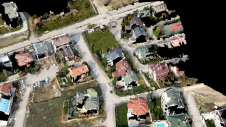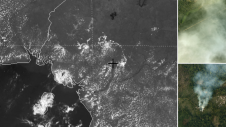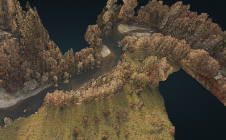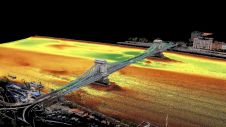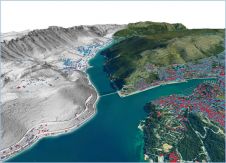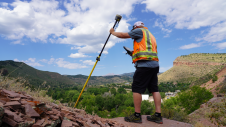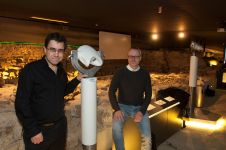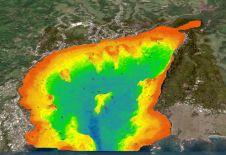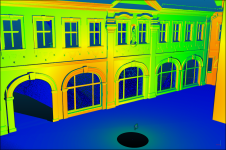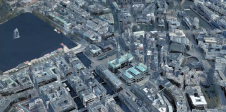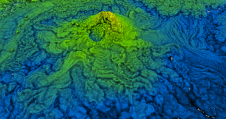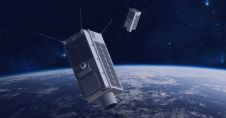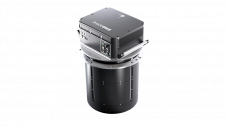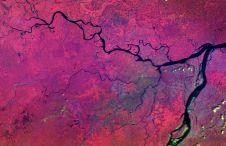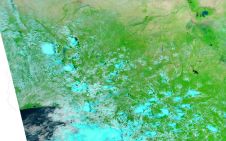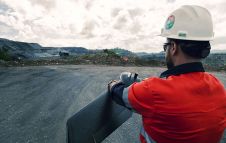Consolidation of AI and Autonomy - Commercial UAV Show 2018
This article was originally published inGeomatics World.
The 2018 Commercial UAV show was as busy and wide-ranging as in previous years. Mapping did not have a high profile although some exhibitors were promoting photogrammetry and mapping in general and several seminar and conference sessions featured mapping. The overarching theme of the event could be characterisied as consolidation and looking to the future. Artificial intelligence (AI) and autonomy were strong themes, meaning the development of smart drones. This includes interaction with robots to manage battery change for example, although it is unlikely that we will see genuine autonomous UAVs very soon.
But several exhibitors claim the use of AI, for example for surveillance of industrial sites where a drone is constantly flying and is programmed to recognise particular activities or objects. Aerodyne and Coretronic Robotics were examples of this. AI is also used to analyse data collected for inspection purposes to reduce the data volume and concentrate on the objects of particular interest offline. An issue related to this is BVLOS (Beyond Visual Line of Sight). This is sanctioned in some regulatory regimes in certain circumstances, for example to survey power lines and offshore wind farms. Products are on the market to control BVLOS. A speaker from Skyhopper stated 'drones are transitioning from manual to autonomous systems' to enable more varied and sophisticated applications. Cybersecurity is an issue with BVLOS operation along with privacy and use of AI must have security elements.
The exhibition covered all aspects of drone technology and use. Companies and organisations covered inspection (a major application), safety, insurance, precision agriculture, health, training, and components. Of particular interest were tethered drones for monitoring; underwater drones also featured. Drones ranging from micro to very large were displayed and demonstrated. Payloads concentrate on cameras and one of particular interest is a GeoSLAM Zeb mounted on a drone that can be used for outdoor or indoor use. Photogrammetric software was exhibited by Blue Marble, Pix4D, Terrasolid and Carlson.
一个nother feature of the exhibition were universities which had taken twelve booths and demonstrated research into applications and software as well as training.
Seminars covered the themes of Mapping and surveying, 3D imaging and geospatial innovations, Research, Innovation, Training and Careers, Precision Agriculture and Bluelight Services and Policy - Health and Safety. The conference covered similar themes but in a more organised manner. A major theme of the conference was regulation with many speakers noting the problem of different regulations in different countries and the range of difficulty in operating across international borders. It was considered that UK had a well-balanced regulatory regime. The European Commission is preparing regulation for drones and has already funded a Privacy Code of Conduct.
In the conference session on construction, Mark Lawton from Skanska reported that drones are very useful for construction, but they are not always the most efficient tool for survey grade work where precision is essential. They are very useful for collecting evidence using media grade imagery when speed and area of coverage are important. A library of drone imagery can be created which is accessible to all professionals on the site and is invaluable for use in site meetings. Survey grade imagery needs a larger, more stable platform.
Finally, it is worth noting that although the show goes under the name 'UAV show', the word drone is widely used amongst exhibitors and speakers. Granshaw (2018), in The Photogrammetric Record, lists 16 terms used for unmanned vehicles, and concludes that UAS (Unmanned Aircraft System) should be adopted for the scientific community whilst drone is appropriate for more general use.
References
Granshaw, S. 2018. RPV, UAV, UAS, RPAS ... or just a drone. Photogrammetric Record 33(162):160 - 170.
This article was published in Geomatics World January/February 2019
Make your inbox more interesting.一个dd some geo.
Keep abreast of news, developments and technological advancement in the geomatics industry.
Sign up for free


